Digital Darkroom: An Exploration of Altered Realities
Images have been manipulated since the earliest days of photography. Techniques such as retouching, compositing and multiple exposures have been employed in the darkroom for generations, and with the advent of computer technologies, new styles have emerged. An exhibit at Los Angeles’ Annenberg Space for Photography showcases the work of 17 artists and explores the intersection of art and technology. “Digital Darkroom” opens to the public Dec. 17, 2011, and runs through May 28, 2012.
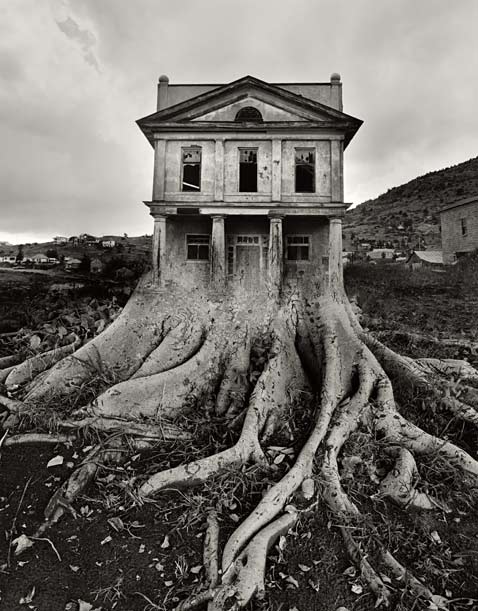
Untitled, 1983 (Jerry Uelsmann)
Their work presents altered realities using photography and digital or darkroom manipulation. Each artist is a master of different types of digital techniques: compositing highly layered imagery, working in 3-D and lenticular imaging, meticulously stitching together images, using lighting in highly inventive ways, and so many others. These artists and the techniques they use are representative of a generation of artists who are changing the way we view the world around us. The show will present an interesting juxtaposition of young artists immersed in digital work against Jerry Uelsmann, a master of darkroom compositing techniques.
Jerry Uelsmann is considered one of the forefathers of composite imagery. He is a master printer, producing composite photographs with multiple negatives and extensive darkroom work with film. He uses up to a dozen enlargers at a time to produce his final compositions. He seeks to create allegorical surrealist imagery of the unfathomable.

Untitled, 2003 (Jerry Uelsmann)
Jean-François Rauzier has been exploring the multiple opportunities offered by computer retouching, turning himself into a “virtual” painter. He created the “Hyperphoto,” a concept that makes it possible for him to combine both infinitely big and infinitely small things in one single image. He uses photo stitching to combine thousands of images together. This allows the viewer to zoom into his photos and see precise details. He also often puts himself into his images.
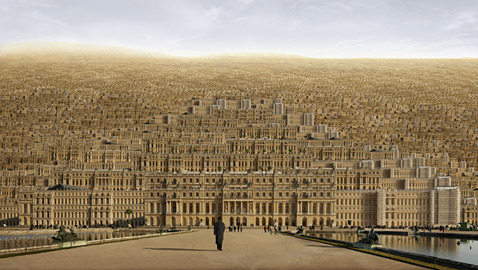
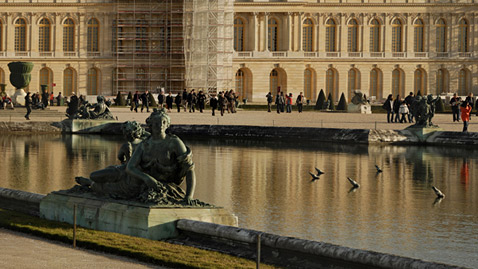
Versailles, 2009 (Jean-François Rauzier)
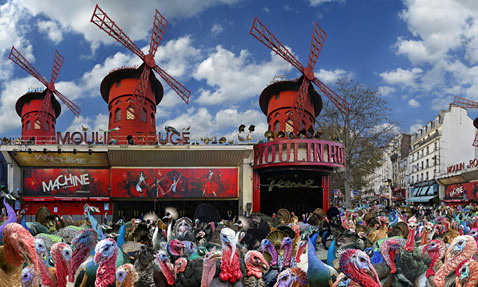
French Cancan, 2010 (Jean-François Rauzier)
Brooke Shaden uses a square format and heavy texture work to create a painterly aesthetic. She uses digital photography as well as Photoshop. With these tools in hand, she creates new worlds through her images. For her, self-portraiture is not autobiographical in nature. Instead, she attempts to place herself within worlds she wishes we could live in, where secrets float out in the open, where the impossible becomes possible.
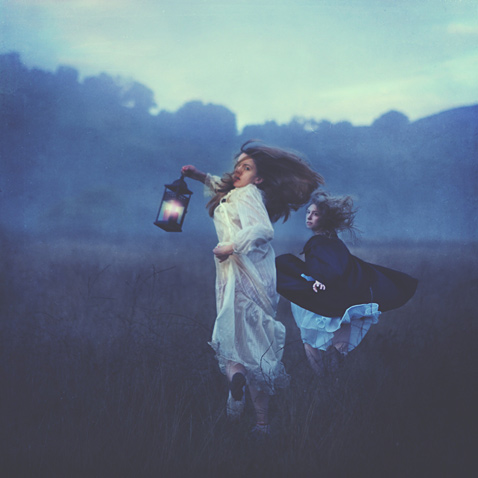
Running from Wind, 2010 (Brooke Shaden)
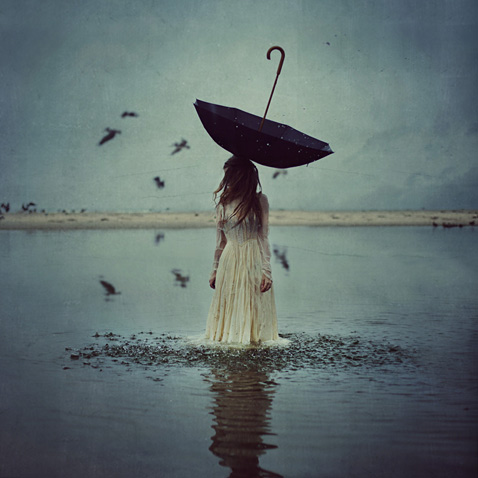
The World Above, 2011 (Brooke Shaden)
Pierre Beteille does not believe he is a photographer; he thinks of himself as an art director. He uses Photoshop, Lightroom and Illustrator to create unique self-portraits that are often humorous and ironic.

Me, me, me, me, me … and me!, 2008 (Pierre Beteille)

On/Off Button, 2010 (Pierre Betielle)
Jean-Marie Vives is a skilled matte painter who has done illustrations for numerous well-known movies. His work runs the gamut from pure illustration to composite imagery. His work is based on fantasy but has a foothold in reality.

Fondation Nicolas Hulot – Bear, 2004 (Jean-Marie Vives)


Cube, 2006 (Jean-Marie Vives)
Chris Schneberger is a working artist who teaches photography at Columbia College in Chicago. His art focuses on images with a surrealist narrative. In 1998, he began using stereoscopic photography to illustrate his semi-historical stories. These stories are often inspired by the supernatural, compelling locations and technical advancement. His work will be presented in 3D anaglyphic form along with additional 3D video elements.
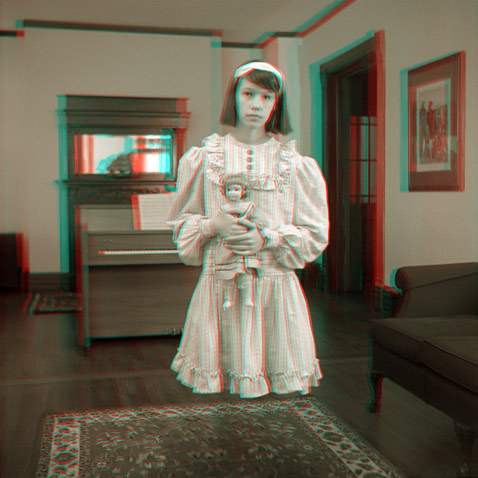
Frances Naylor With Doll, 1921 (Chris Schneberger)
Chris Levine is a well-known installation artist. The fundamental driver in his work is the pursuit of sensory experiences through image, form and light. His work often utilizes technology and the cross fertilization of technique and talent by way of collaborative projects. His work has been commissioned by the Island of Jersey to celebrate 800 years of allegiance to the crown, and by the Museum of Modern Art in New York. His portrait of the Queen of England will be printed on the 100 pound sterling note.

Equanimity, 2004 (Chris Levine)
Josef Astor’s advertising and editorial photography has appeared in numerous magazines. His portraits of famous architects taken for Vanity Fair will be featured in Digital Darkroom. His fine art photographs have a surreal quality to them.
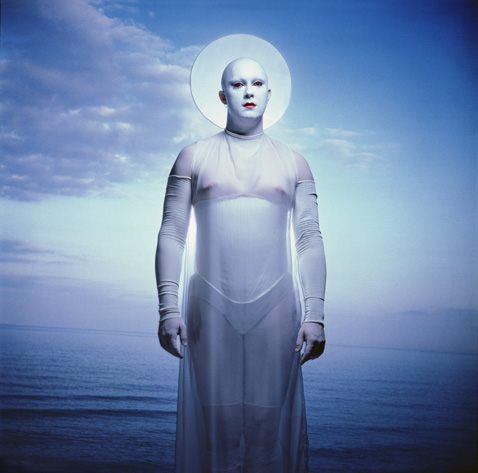
Antony, 1998 (Josef Astor)
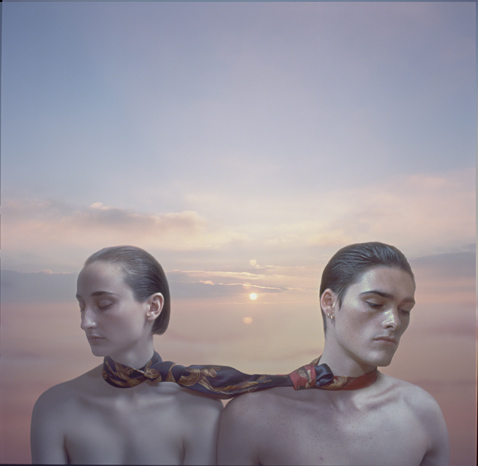
Love in Limbo, 2009 (Josef Astor)
Ted Grudowski’s work in 3D anaglyph has a surreal edge. He creates wild and imaginative creations that inspire viewers to come up with their own unique narrative. Currently, he has two projects using his anaglyphic format. The first is his surreal celebrity portraiture. The second is his collage compositions that highlight his fanciful visions.
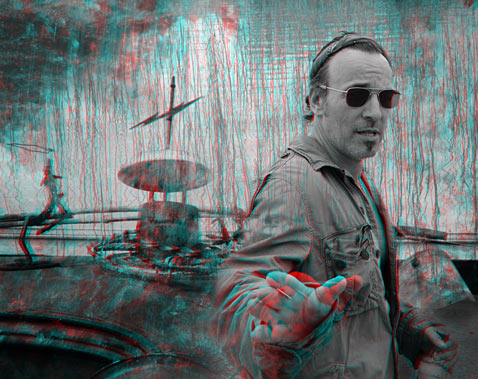
Bruce Springsteen , 2006 (Ted Grudowski)
Jacques Khuong Nguyen has a background in commercial photography but is still inspired to do fine art projects. His work has a sleek and vivid composition, as well as a surreal feel to it.
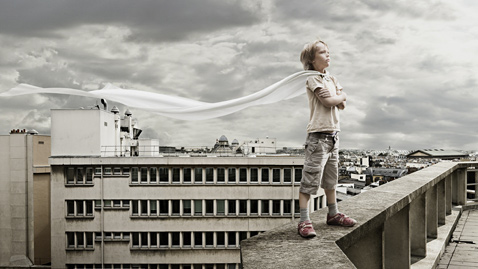
Hero: Standing Dream, 2008 (Jacques Khuong Nguyen)
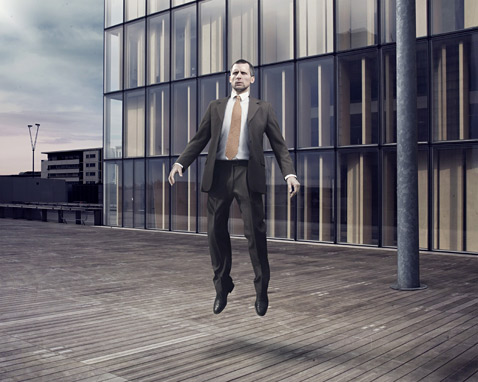
Levitation: Something in the Air, 2008 (Jacques Khuong Nguyen)
Claudia Kunin shoots real life people, objects and backdrops and then assembles them in Photoshop. The final presentation is an image that requires special 3D glasses to view, adding a new dimension to fine art photography.
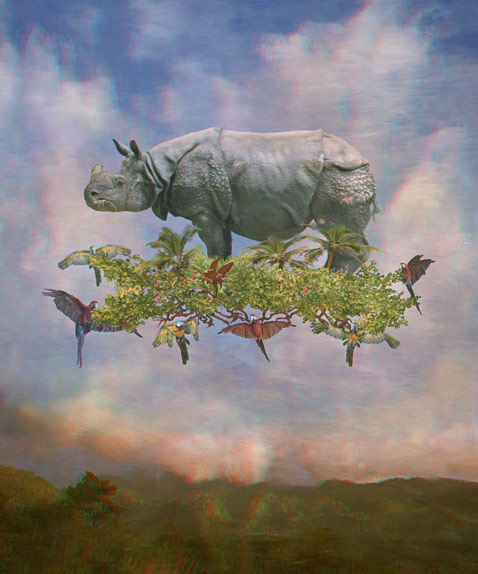
Impossible Possible, 2010 (Claudia Kunin)
Mike Pucher He is a technically precise photographer. His photographs in Digital Darkroom will be of botanicals, which require 3D glasses. These images show the beauty of flowers in a whole new way.
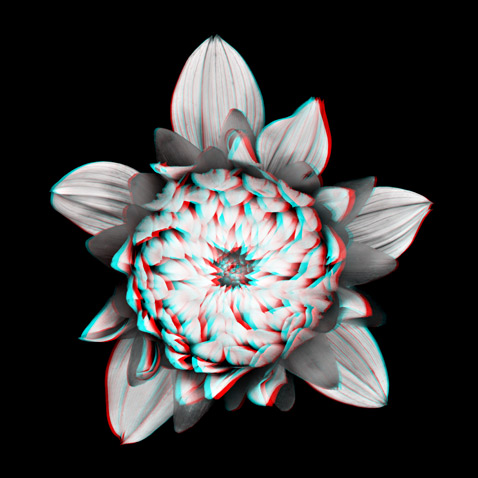
Dahlia No. 10, 2011 (Mike Pulcher)
Martine Roch has a surreal and witty way of looking at animals. She combines her own photography with found photographs to create a whimsical world.
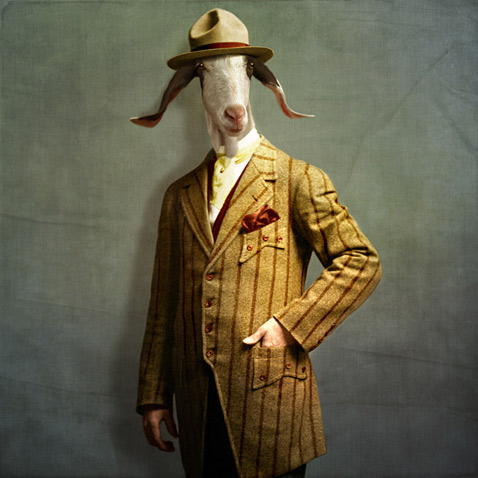
The Honest Man, 2011 (Martine Roch)
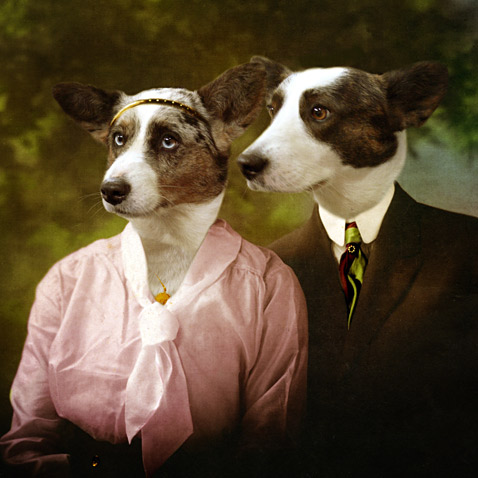
The Pressing Husband, 2010 (Martine Roch)
Joel Grimes is an experienced commercial photographer. His work frequently focuses on sports imagery; and he uses HDR techniques, advanced lighting systems and a personalized color palette.
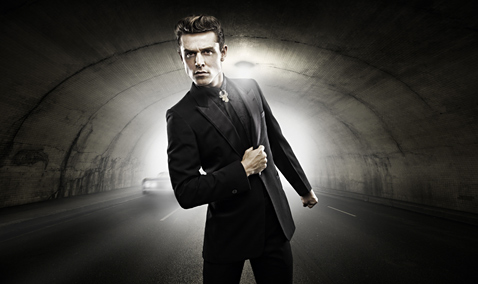
Alexander Christensen in the Second Street Tunnel, 2011 (Joel Grimes)
Maggie Taylor combines tintypes, photographs and found images. These images are then composed, combined and colorized in Photoshop. One of Maggie’s finished pieces might contain hundreds of layers. Maggie is married to Jerry Uelsmann, a featured photographer in this exhibit whose manual process is a stark contrast to her digital technique.
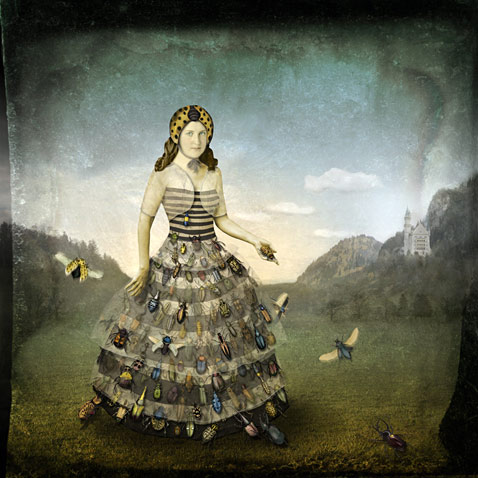
Days like this, 2011 (Maggie Taylor)
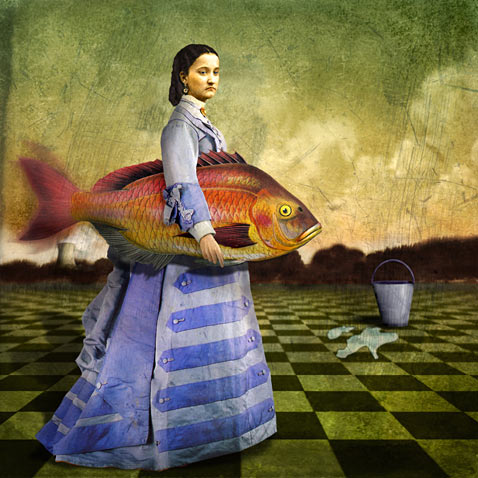
Woman who loves fish, 2003 (Maggie Taylor)

Subject to change, 2004 (Maggie Taylor)
Stanley Smith is the head of the photography studio and digital imaging lab at the J. Paul Getty Museum. His work is often a composition of images that he has photographed himself over the years and has put together using photo stitching.
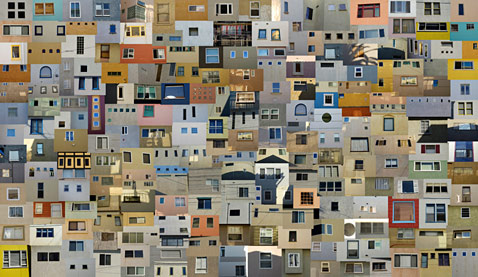
Windows (Stanley Smith)
Bonny Pierce Lhotka’s images in her increasingly complex art have become symbols referring to time, space, the journey of life, death, wisdom and the paradoxes of our human condition. She uses Photoshop and tactile techniques with traditional media to create one-of-a-kind handmade images. She also creates 3D and lenticular images.

Green Street, 2004 (Bonny Pierce Lhotka)